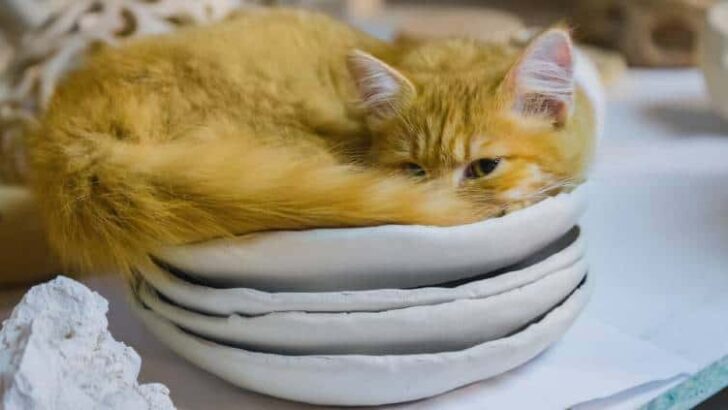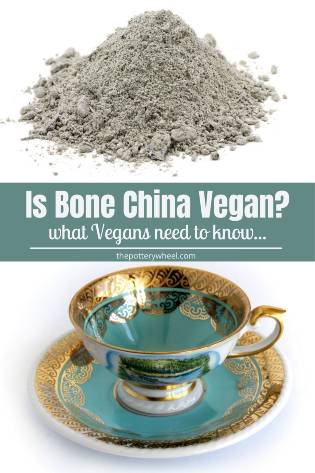Your cart is currently empty!
Is Bone China Vegan? – And is it Ethical or Cruelty-Free?
Published:
Last Updated:

Affiliate Disclaimer
As an affiliate, we may earn a commission from qualifying purchases. We get commissions for purchases made through links on this website from Amazon and other third parties.
Bone China is an expensive and sophisticated type of porcelain that is meant to exude richness and great prestige. However, since it literally contains the word bone in it, a lot of vegans have questioned the ethics behind its design and manufacturing. So, is bone china vegan?
The truth is just as the name suggests bone china is made from crushed bones that are mixed with other clays to give it its distinct color and style. Therefore, it is impossible to find an antique or older bone china set that is vegan. That said, some modern manufacturers have been able to completely substitute bone ash with vegan-friendly alternatives.

Is Bone China Vegan Friendly?
Bone china is not vegan since one of its unique features is the inclusion of bone ash during manufacture. Its uses animal bones that have been discarded at slaughterhouses, specifically cow bones. Bone china pieces must contain at least 25% bone ash, but frequently much more close to 40% to 50%.
The bone ash is added to the clay mixture to give it its unique milky and almost translucent appearance. Hence, it is practically animal-based.
Is Bone China Ethical?
The topic of ethics is highly subjective and therefore clearly defining something as unethical or ethical can be challenging. There are those that argue that bone china is completely ethical and others claim it’s not.
One popular argument defending the manufacturing of bone china is that it employs the entire animal, which may have been killed just for its flesh or skin. This, however, can be considered an old-fashioned idea, and the desire for bone china has long meant that more animals are slaughtered for their bones. Along with the meat business, the bone china industry is equally responsible for slaughtering animals for their parts.
According to vegans, a person who kills animals cannot claim to be ethical. It is firmly claimed that someone’s character of goodness is inextricably linked with compassion for animals. Therefore, bone china, made from animal bone, is unethical as slaughtering processes are unregulated and frequently illegal. However, due to the high demand for exquisite bone china, lobbying for such items keep regulation at bay.
There are also some rare occasions where human bones are also used to produce some uncommon kinds of bone china. For example, artists utilize the same technique used to make traditional bone china dinnerware, but instead of cow ash, they use human cremains.
It is more of an artifact created to commemorate dead loved ones, and some Americans are choosing to have these mementos produced. While having a loved one’s ashes recycled into a keepsake is becoming a niche fad, putting human bone ash into exquisite porcelain is still not an approved or widely recognized technique.
Is Bone China Cruelty Free?
Essentially, bone china manufactures do not slaughter the animals themselves. Some even acquire the bones from animals that have died naturally. However, most of the bones are acquired from slaughterhouses.
Over the years the United States has tried to impose regulations that mandate cruelty-free slaughter of animals. Today most farms use a Penetrating captive bolt which fires a metal bolt into the brain of an animal causing it to die almost immediately.
According to most experts, this is the most human way to kill any sentient being. When stunning is done correctly, it results in the immediate death of the animals, meaning it won’t feel pain. However, a lot of farms still kill animals inhumanely or do not stun them correctly.
Also, the Humane Slaughter Act was only introduced in 1978. Some bone china pieces that exist in the market pre-date this time.
However, the term cruelty-free is very ambiguous. Some believe that cruelty-free means that animals are not harmed or killed during the production of any good. Others on the other hand claim that it signifies the killing of an animal in the most humane way.
Is There a Vegan Version Of Bone China?
Thanks to the efforts of researchers and developers, there is 100% vegan bone china in the market.
They have developed the new bone china without bone ash or any other animal content. It is chemically changed and has similar characteristics to authentic bone china.
The new bone china is created by adding calcium oxide and mineralizer to the raw material. These substances contain similar elements to bone ash. As a result, it has the same appearance as the bone china but is less transparent.
Final Thoughts
Nowadays, an increasing number of individuals are concerned about the environment and animal welfare. The vegan lifestyle entails more than just avoiding foods. Vegan consumers are shunning apparel, cosmetics, and other items that include animal products or by-products.
Individuals that abstain from animal products do not find bone china vegan as it comprises animal bone ash, which is normally slaughtered under cruel and unethical procedures.
However, a 100% vegan-free bone china has been developed. The new bone china is 100% free of animal products. Fortunately, new bone china items are less expensive than bone china since it does not have bone ash substance which is costly.



